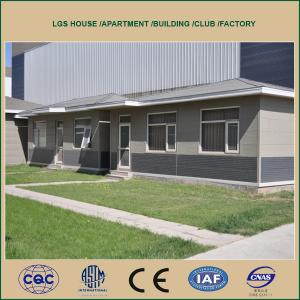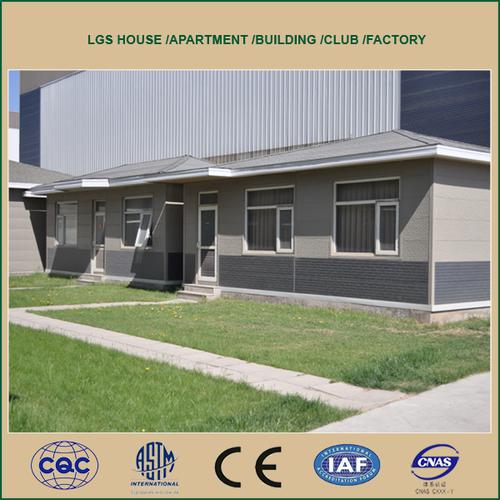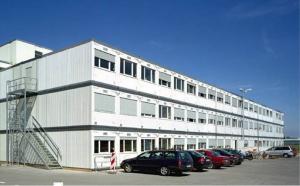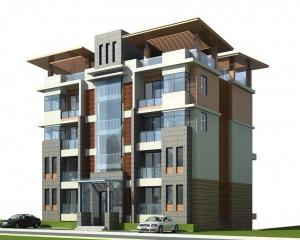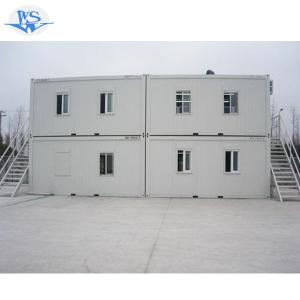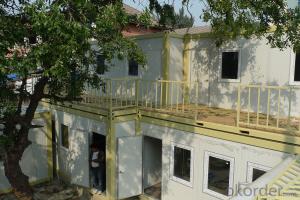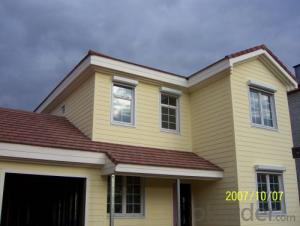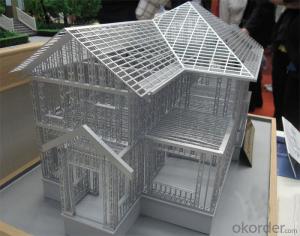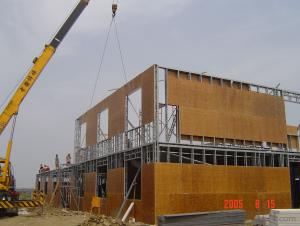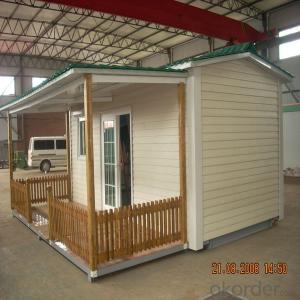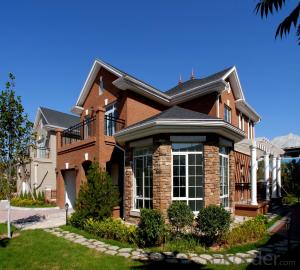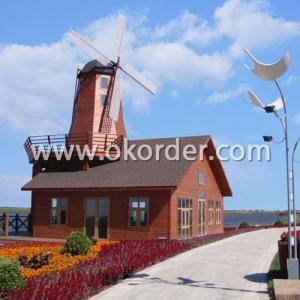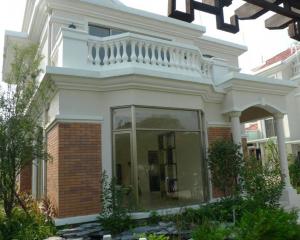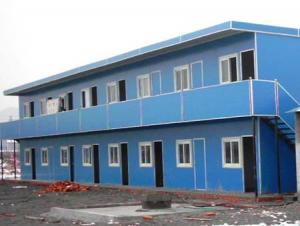House Prefabricated Affordable Made in China
- Loading Port:
- Tianjin
- Payment Terms:
- TT OR LC
- Min Order Qty:
- 100 m²
- Supply Capability:
- 6000000 m²/month
OKorder Service Pledge
OKorder Financial Service
You Might Also Like
House Prefabricated Affordable Made in China
1.The following pictures are our 100,000 square meter production base & model houses for showing: We have eight production lines, production capability reach to 600,000 square meters per month.
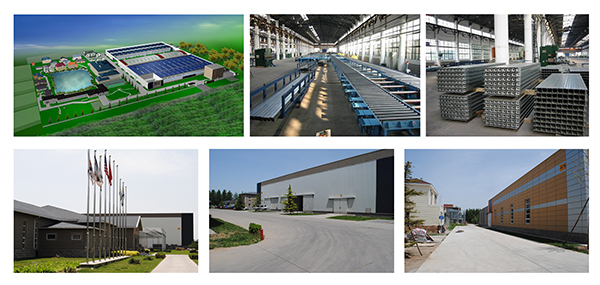
Up to now, we have cooperated with more than 70 countries:

2.Products structure diagram:
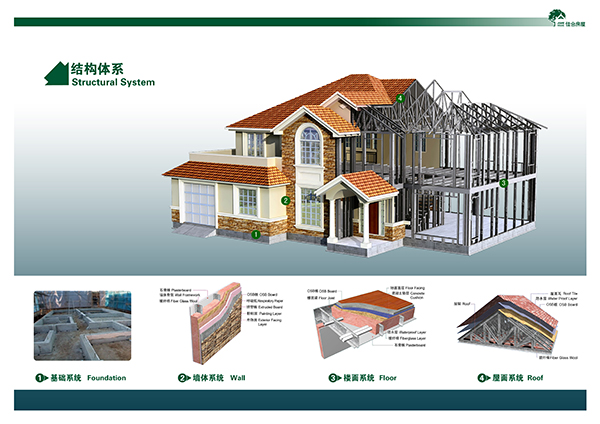
3. Assembly Instructions:
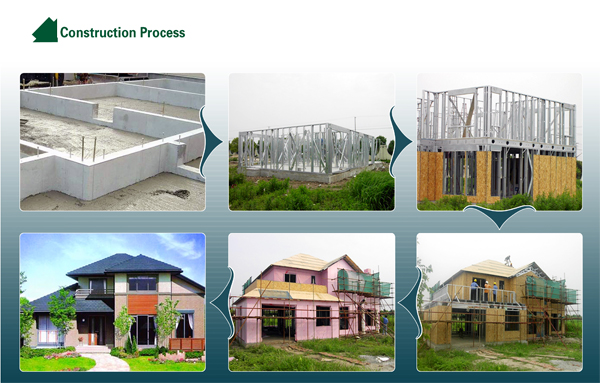
4.Our management system:
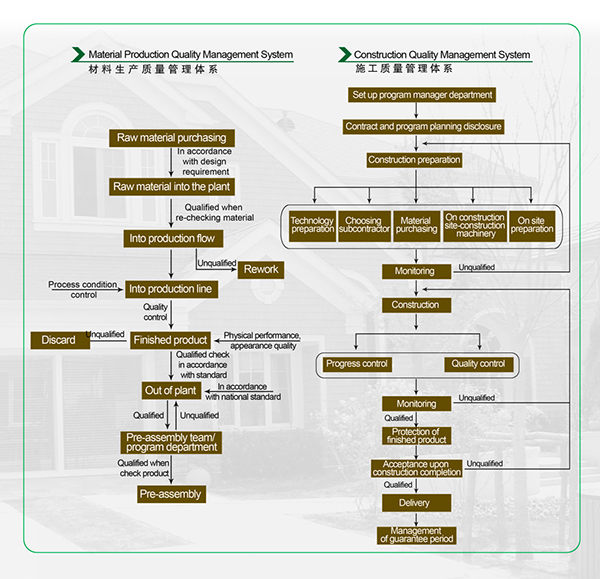
5.We can offer with the following products:
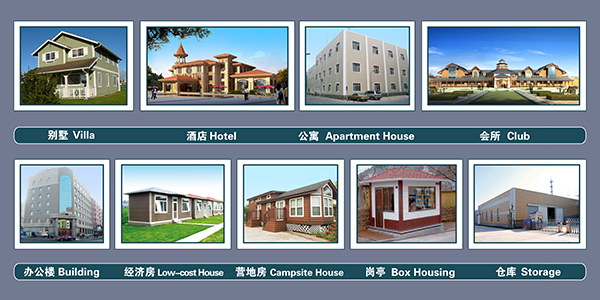
6. FAQ:
1.How about the installation? For example, the time and cost?
To install 200sqm house needs only 45 days by 6 professional workers. The salary of enginner is USD150/day, and for workers, it's 100/day.
2.How long is the life span of the house?
Around 50 years
3. And what about the loading quantity?
One 40'container can load 140sqm of house.
- Q: Can container houses be designed for communal living?
- Yes, container houses can definitely be designed for communal living. Container homes are highly versatile and can be customized to accommodate multiple individuals or families. With careful planning and design, communal spaces such as shared kitchens, living areas, and bathrooms can be incorporated into container house layouts. Additionally, the modular nature of container homes allows for easy expansion and connection of multiple units, making them ideal for creating a larger communal living environment.
- Q: What are the ancillary facilities in the office?
- bank (2-3) or bank self-service outlets, internal staff Dining area, business center and so on.
- Q: Are container houses suitable for individuals who prefer a minimalist lifestyle?
- Absolutely, container houses are a perfect fit for individuals who embrace a minimalist lifestyle. Renowned for their simplicity and efficiency, container houses are the ultimate choice for minimalists. Constructed using recycled shipping containers, these houses have a limited amount of space, which compels individuals to downsize and prioritize their belongings. This limitation facilitates the adoption of a minimalist mindset. Container houses are ingeniously designed to optimize space utilization and minimize waste. With their open floor plans and ingenious storage solutions, these houses create a clutter-free living environment for minimalists. Additionally, the small size of container houses encourages individuals to focus on essential items and avoid unnecessary possessions. Moreover, container houses can be customized to cater to minimalist preferences. The interior design can be kept clean and minimal, with functional furniture, neutral color schemes, and ample natural light. By maintaining a minimal and uncluttered design, individuals can create a serene and tranquil living space that complements their minimalist lifestyle. Not only do container houses appeal to minimalists, but they also offer sustainability benefits. By repurposing shipping containers, these houses contribute to waste reduction and promote eco-friendly living. Minimalists often value sustainability and ethical choices, making container houses an excellent option for those seeking a minimalist lifestyle without compromising their environmental values. In summary, container houses provide a practical and aesthetically pleasing solution for individuals who embrace a minimalist lifestyle. These houses offer simplicity, efficiency, sustainability, and endless possibilities for creative design, making them an ideal choice for minimalists seeking a balanced and intentional way of life.
- Q: Can container houses be designed for pop-up restaurants or food stalls?
- Yes, container houses can definitely be designed and repurposed for pop-up restaurants or food stalls. Container houses have become increasingly popular as a quick and affordable solution for various purposes, and the food industry is no exception. The versatility of container houses allows for easy customization to suit the needs of a pop-up restaurant or food stall. They can be modified to include necessary amenities such as a kitchen area, seating space, storage, and even a serving counter. Additionally, containers can be stacked or joined together to create larger spaces if required. Container houses are portable and can be transported to different locations, making them ideal for pop-up restaurants or food stalls that need to move to different areas or events. They can be easily loaded onto trucks and transported to the desired site, offering flexibility and convenience for entrepreneurs looking to set up temporary food establishments. Furthermore, container houses can be designed to be aesthetically pleasing and attractively decorated to create an inviting atmosphere for customers. With the right design and branding, a container-based pop-up restaurant or food stall can stand out and make a memorable impression on customers. Overall, container houses offer a practical, cost-effective, and customizable option for pop-up restaurants or food stalls. They provide the necessary amenities, portability, and potential for attractive design to create a successful and unique dining experience.
- Q: Are container houses resistant to rust and corrosion?
- Yes, container houses are generally resistant to rust and corrosion. This is because most container houses are made from shipping containers, which are constructed using durable materials such as steel or aluminum. These materials are known for their high resistance to rust and corrosion. Furthermore, shipping containers are often coated with protective paint or anti-corrosion treatments, which further enhance their resistance to rust and corrosion. This protective coating acts as a barrier, preventing moisture and oxygen from coming into direct contact with the metal, which helps prevent rust formation. However, it is important to note that the level of rust and corrosion resistance can vary depending on the quality of the container and its maintenance. If a container house is poorly maintained or exposed to harsh environmental conditions, such as constant exposure to saltwater or humidity, it can still be susceptible to rust and corrosion over time. Regular inspection and maintenance, including checking for any signs of rust or corrosion and promptly addressing them, can help ensure the longevity and resistance of a container house to rust and corrosion.
- Q: Are container houses suitable for individuals who frequently relocate?
- Yes, container houses are highly suitable for individuals who frequently relocate. The modular and portable nature of container houses makes them perfect for those who have a nomadic lifestyle or frequently change locations. These houses are designed to be easily transported and can be moved to different locations without much hassle. Container houses are built using repurposed shipping containers, which are durable and sturdy. They can withstand different weather conditions and are designed to be stackable, allowing for easy transportation on trucks, trains, or ships. This means that individuals can easily transport their container house to a new location whenever they want to move. Moreover, container houses are customizable and can be modified to meet individual needs and preferences. They can be easily expanded or downsized depending on the space required. This flexibility allows individuals to adapt their living space to different locations and accommodate their changing needs. In addition to their mobility and flexibility, container houses are also cost-effective. They are generally more affordable than traditional houses and require less maintenance. The use of shipping containers reduces construction costs, and their durability ensures that they last for a long time, reducing the need for repairs or renovations. Container houses also offer sustainability benefits. By repurposing shipping containers, individuals contribute to recycling efforts and reduce the demand for new construction materials. Additionally, container houses can be designed to be eco-friendly, incorporating energy-efficient features and renewable energy sources. In conclusion, container houses are highly suitable for individuals who frequently relocate. Their mobility, flexibility, cost-effectiveness, and sustainability aspects make them an ideal choice for those with a nomadic lifestyle or who need to move frequently.
- Q: Can container houses be designed with a walk-in closet or dressing room?
- Certainly, it is feasible to incorporate a walk-in closet or dressing room into a container house. The versatility and customizability of shipping containers for housing allow for such additions to be made according to individual requirements. Although space in container houses may be limited compared to traditional homes, the design can be optimized by creatively using the available area. Vertical space can be maximized by incorporating shelves, hanging racks, and storage solutions in the walk-in closet, thus maximizing storage capacity. Sliding or folding doors can also be utilized to save space and make the most of the available area. To accommodate a dressing room, the design of the container house can be adjusted accordingly. By strategically placing a mirror and vanity area, a separate space for getting ready and applying makeup can be created. This can be achieved by partitioning off a section of the container or by using a separate container module solely for the purpose of a dressing room. Ultimately, the feasibility of having a walk-in closet or dressing room in a container house depends on factors such as the overall design, size of the container, and the specific needs and preferences of the homeowner. However, with proper planning and customizations, it is certainly possible to have a functional and stylish walk-in closet or dressing room within a container house.
- Q: What are the common challenges in building a container house?
- Building a container house, while innovative and cost-effective, does come with its own set of challenges. Some of the common challenges faced during the construction of a container house include: 1. Structural Modifications: Containers are originally designed to carry heavy loads on their four corners, so when converting them into living spaces, significant structural modifications are required. These modifications involve cutting openings for doors and windows, reinforcing walls, and adding additional support to ensure the structural integrity of the container house. 2. Insulation and Ventilation: Containers are made of steel, which can conduct heat or cold easily. Insulating the container properly is crucial to maintain a comfortable living environment. Additionally, adequate ventilation needs to be planned to prevent condensation and ensure proper airflow within the limited space. 3. Plumbing and Electrical Systems: Installing plumbing and electrical systems can be challenging due to the limited space available in a container house. Adequate planning is required to ensure proper placement and connection of pipes, wires, and outlets, as well as compliance with building codes and regulations. 4. Building Permits and Regulations: Depending on the location, obtaining the necessary permits and adhering to building regulations can be a challenge. Some areas may have specific regulations for container houses, which need to be followed to ensure the project is legally compliant. 5. Transportation and Site Access: Containers are large and heavy structures, which can pose challenges during transportation to the building site. Additionally, access to the site, especially in remote areas or limited spaces, can be difficult, requiring careful planning and coordination. 6. Limited Space and Design Flexibility: Containers have fixed dimensions, which can limit the design flexibility and overall living space of a container house. Efficient space planning and creative design solutions are required to maximize the available space and ensure a functional and comfortable living environment. 7. Environmental Considerations: Containers may have been previously used to transport goods, which could potentially introduce hazardous materials or toxic substances. Proper cleaning and treatment of the container are necessary to ensure a safe living environment. Despite these challenges, container houses offer unique advantages such as affordability, sustainability, and mobility. With proper planning, professional assistance, and attention to detail, these challenges can be overcome, resulting in a unique and environmentally friendly living space.
- Q: Can container houses be designed to be wheelchair accessible?
- Yes, container houses can be designed to be wheelchair accessible. The design and layout of a container house can be customized to ensure that it meets the needs of wheelchair users. There are several modifications that can be made to achieve wheelchair accessibility in a container house. Firstly, the entry points of the container house can be modified to have ramps or lifts instead of stairs. This allows wheelchair users to easily enter and exit the house without any barriers. The width of the entry points can also be expanded to accommodate wider wheelchairs. Secondly, the interior layout can be designed to have wider doorways and hallways to allow for easy wheelchair maneuverability. The doors can be replaced with wider ones, and the hallways can be widened to meet wheelchair accessibility standards. Additionally, the flooring can be made smooth and even to ensure a comfortable and accessible surface for wheelchair users. Moreover, the bathroom and kitchen areas can be designed with wheelchair accessibility in mind. This includes having lower countertops and sinks, as well as installing grab bars and handrails for added support and stability. Showers can be designed with roll-in access and seating options for wheelchair users. Additionally, the container house can be designed with an open floor plan to provide ample space for wheelchair users to move around freely. The furniture and fixtures can also be chosen or modified to be wheelchair-friendly, with considerations for height and accessibility. In conclusion, container houses can definitely be designed to be wheelchair accessible. With careful planning and customization, it is possible to create a container house that meets the needs of wheelchair users, providing them with a comfortable and accessible living space.
- Q: Are container houses resistant to hail or hailstorms?
- Container houses are generally resistant to hail or hailstorms due to their sturdy and durable construction. The thick steel walls of container houses can withstand hail impact and provide protection to the inhabitants inside. However, the extent of resistance may vary depending on the size and intensity of the hailstorm.
Send your message to us
House Prefabricated Affordable Made in China
- Loading Port:
- Tianjin
- Payment Terms:
- TT OR LC
- Min Order Qty:
- 100 m²
- Supply Capability:
- 6000000 m²/month
OKorder Service Pledge
OKorder Financial Service
Similar products
Hot products
Hot Searches
Related keywords
